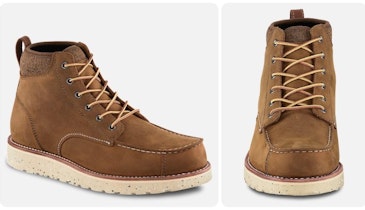I truly love antlers. Don’t you? And not just big antlers, but old antlers, young antlers, shed antlers, typical antlers, non-typical antlers — you get the picture. And while antlers aren’t the real reason I love deer hunting, it sure would be different without them.
Did you know that medical scientists have extreme interest in antler growth and development? It’s true. To understand why, you first must know some basic facts about antlers. For example, did you know that deer antlers are the fastest-growing normal tissue on the planet, with only embryos and tumors able to produce new tissue at the same rate? It is the pedicle material that enables antler growth; damage to the pedicle can result in abnormal growth.
Another interesting fact is if pedicle material is transplanted to other skeletal regions, the growth of antlers will occur in that location. For example, scientists have transplanted this material onto the tibia of deer and caused them to grow an antler from their leg. They have also transplanted material from a pedicle onto the foreheads of mice and caused them to grow antler-like projections. Also, we all know by now that antler growth is controlled by the photoperiod and hormones. Did you know that in experiments that control the photoperiod, deer have grown three sets of antlers in a year, or have retained their antlers for an entire year?
The testosterone levels of a buck regulate the annual cycle of growing and shedding antlers. Changes in these levels can alter the antler cycle. One example is bucks you see with antlers in velvet long into the fall. The cause? Testosterone production was interrupted early in the growth cycle. If testosterone levels are interrupted when the buck has hardened antlers he will shed them as usual, but the antlers he grows the next year will not harden. This is usually the result of injuries to one or both testicles. The result is the non-typical “cactus” bucks that you see occasionally.
Hunters know all about the value of mineral licks during the antler growth cycle. Did you know that the mineral requirements needed for this growth exceed those for skeletal growth and maintenance by up to three times the amount? Most calcium and phosphorus required for antler growth comes from a deer’s diet (and mineral licks), but any of those needs not meet by diet are provided by resorption, or transferring minerals from the skeleton to the antlers. Most of this comes from the ribs and scapulae, and this loss of minerals can cause the ribs and shoulders to become porous and weak.
However, by September, bucks can fully replace the minerals borrowed from their skeleton. Research has shown deer are constantly undergoing skeletal rebuilding. This is one possible reason why bucks are attracted to natural and man-made mineral licks during and immediately after the antler-growing period. When the antlers harden — a process that converts cartilage to bone — they harden from the base up to the tip. Bucks shed antlers during winter by absorbing the bone material at the base of the antler. The degeneration of this tissue between the pedicle and antler is considered the quickest deterioration of living tissue known to man.
Antler Insights
Alright then. Why are antlers of such interest to the medical profession? Because antlers are the fastest-growing normal tissue, and the fastest deteriorating tissue as well, scientists are hoping to learn more about how cancer cells grow so quickly by studying rapidly growing antlers, which mimic certain bone cancers.
One researcher deeply involved in this process before his death in January 2018 was Dr. George Bubenik, a professor of zoology at Guelph University in Ontario, Canada, and a well-known antler growth expert. Some of his research focused on how scientists can use embryonic stem cells that induce antler growth to treat human ailments. Embryonic stem cells allow for the regrowth of antlers each year by differentiating into skin, blood vessels, cartilage and bone.
“Deer antlers are strikingly similar to human limbs, consisting of bone, cartilage, skin, blood vessels and nerves,” Dr. Bubenik was quoted in an article by Kip Adams on the QDMA website in December 2012. “If scientists could duplicate the antler growth process in humans, we could regrow severed fingers and limbs. Additionally, if we also understood the process of temporary osteoporosis in deer, we could likely treat arthritis, immune disorders and degenerative diseases such as osteoporosis in humans.”
For most of us, deer hunting is a way to reconnect with Mother Nature, a time to escape the pressures of the go-go world in which we live while providing the finest organic protein on earth to our families. And yet, today’s deer hunter is not unlike his ancestors in many ways. Though the technology and needs have certainly changed, we still hunt to feed our families and answer a primal urge. Like primeval man, we are enamored with antlers. And today, scientists are even using them to help seek a cure for some of mankind’s cruelest ailments.
Do you have any unique deer antler stories you’d like to share? Drop me a note at editor@grandviewoutdoors.com, I’d love to hear from you!
Photo by Dave Maas






